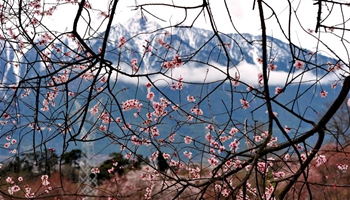BEIJING, March 30 (Xinhua) -- The bankruptcy filing of U.S. nuclear developer Westinghouse Electric Company will have "no material impact" on Sino-U.S. nuclear projects in China, a Chinese power firm said Thursday.
The two sides will continue to prioritize the projects, beef up resources and ensure they are put into operation within the year, China's State Power Investment Corporation (SPIC) said in a statement.
Hit by huge losses, Westinghouse filed for bankruptcy on Wednesday and said it had secured 800 million U.S. dollars in financing to help maintain its core business operations during its reorganization.
Westinghouse and the State Nuclear Power Technology Company, which was merged into the SPIC in 2015, have plans to jointly build four nuclear reactors in east China using AP1000, a third-generation nuclear technology developed by Westinghouse.
The projects are the largest-ever energy cooperation between China and the United States. Work on the four reactors, at Sanmen in Zhejiang Province and Haiyang in Shandong Province, began in 2009.
The SPIC said management and technology staff with the projects were "stable and in good condition," and that all work was proceeding as planned in an orderly way.
Technology transfers in line with the projects have been basically completed and almost all equipment supplied by Westinghouse is in place, an SPIC official said Thursday, declining to be identified.
China has developed its own updated version of third-generation nuclear technology known as CAP1400.
As China is now able to design, develop and manufacture third-generation nuclear technology independently, its nuclear projects will "not be affected substantially, regardless of whether Westinghouse can continue to fulfill the contracts," said the SPIC official.
China had 35 nuclear reactors in commercial operation as of the end of 2016, according to the China Nuclear Energy Association.
Total installed nuclear power capacity in the country jumped 23.8 percent year on year to 33.64 million KW at the end of 2016, and China plans to increase that figure to 58 million KW by 2020, official data show.












